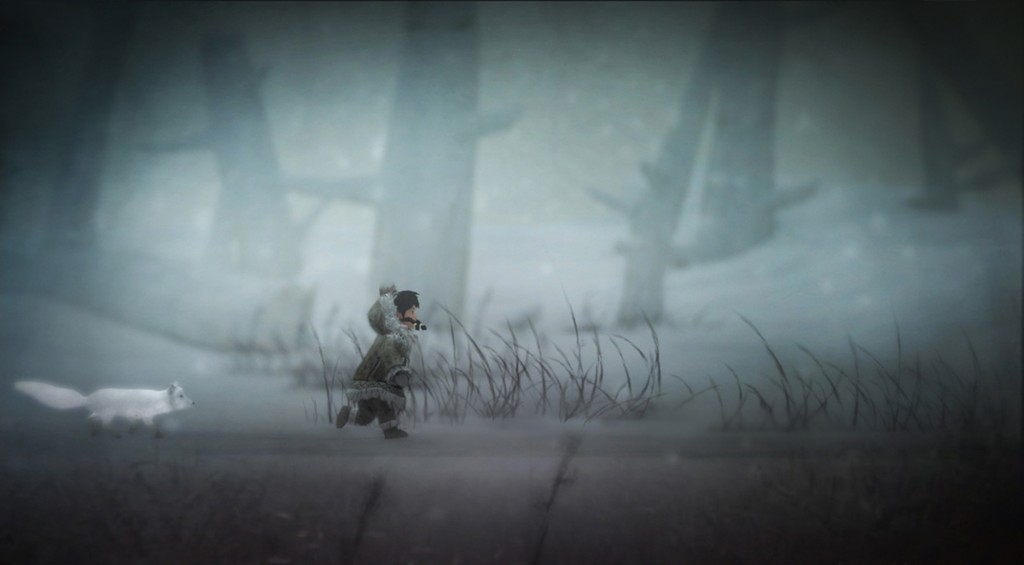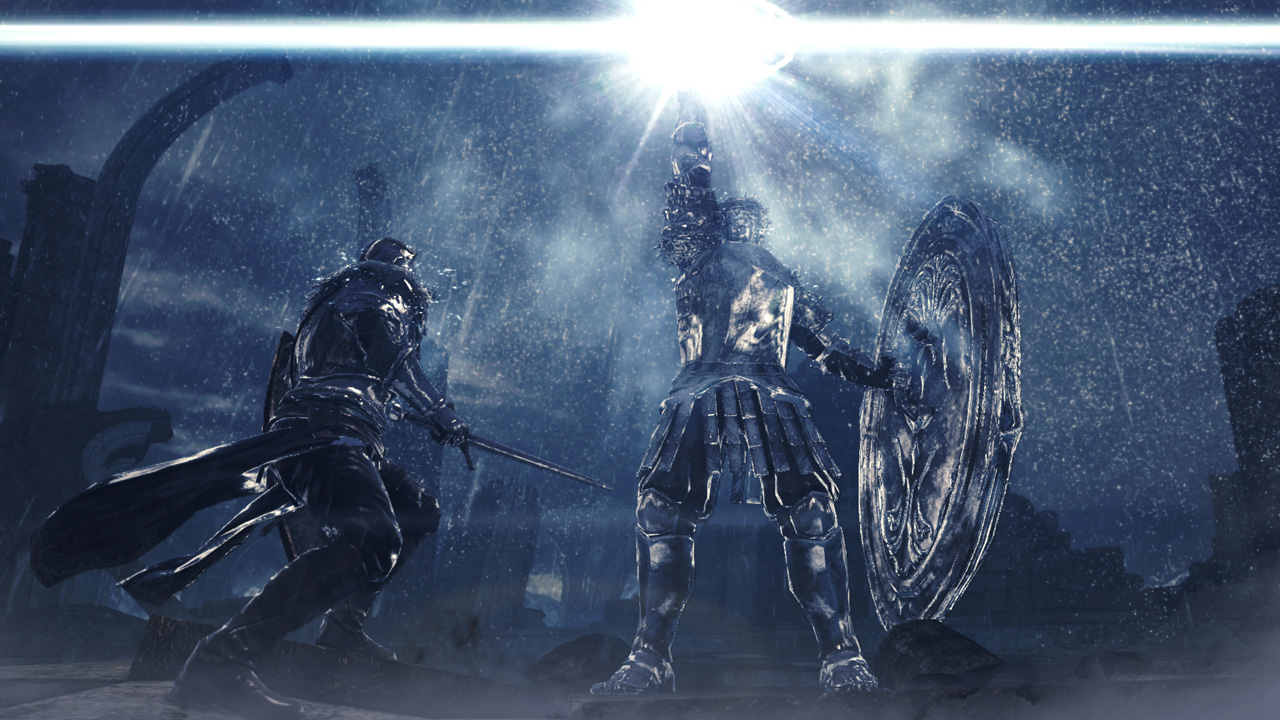Every December we shine a light on the very best games of the year. From the obscure to the overlooked to the very obviously great, here’s the 20 games I think you need to play from 2014.
You can see 20 – 16 here.
You can see 15 – 11 here.
You can see 10 – 6 here.
5. Halo: The Master Chief Collection

There’s not a huge amount to say about The MC Collection. It’s Halo. It plays very well. Just like Halo. It was partially broken at release, although it seems that’s being addressed in post release patches. And two of the four games in the package have been substantially reworked since their initial release.
While Halo: Combat Evolved had already been substantially reworked for a 360 release (and is included in this package) it’s Halo 2 that’s been changed the most for this package. With reworked graphics and a remixed soundtrack as well as brand new cut scenes, it both looks and sounds great. In the MC Collection, both Halo 1 and 2 look like decent modern FPS games, and they retain their classic, finely tuned gameplay. It’s surprising how well these games have held up and how much fun they still are, but looking at this year’s massively successful Destiny, you can see how good Bungie were (and still are) at getting the fundamentals of FPS gameplay right. Halo still feels good.
There’s a real generosity to this package too. Ok, it doesn’t include ODST, but it does include four full, great games. As well as those games all being present in their best form, there’s also cross game playlists, a mountain of multiplayer modes and options, original video content and a whole channel dedicated to background material and shows to watch.
All of this would just be set dressing if it wasn’t for the fact that the Halo games are still so good. Playing through the games from 1 to 4 was a long, exhilarating experience for me, and it was enjoyable both from a nostalgic perspective as well as simply being an engaging, challenging journey. Halo was great, and it remains great.
While the technical problems were a bit of a disappointment, from a curators point of view, this is the definitive Halo fans dream come true. This is the best collection of classic games bundled together since Super Mario Allstars.
4. Dark Souls II

Dark Souls 2 always had a big battle on its hands. With its progenitor achieving widespread adulation from the critics and frothing, gushing devotion from its committed, dedicated playerbase, how could Dark Souls 2 live up to its legacy?
While few will call it an outright failure, most would call it a minor disappointment. There was a lack of continuity between the zones, meaning it felt more disjointed than Dark Souls 1. It was also derided for the structure of those levels and their lack of consistency. At one point you went UP on a lift to get to the lava filled BOTTOM of the game world.
There were other criticisms too. It was too linear. It was too easy. The bosses battles were anticlimactic. The ending was bad. It wasn’t the “proper” sequel. It wasn’t Bloodbourne.
While I can understand some of these criticisms, I can’t agree with them all. And I think it’s unfair that Dark Souls 2 was written off so quickly when Bloodbourne was announced. As great as that game might be, it’s not out now. By all accounts the Alpha was very average. Dark Souls 2 is a great game RIGHT NOW. Let me try to tell you why.
For one, Dark Souls 2 is NOT too easy. It’s a brutally tough game. Sure, you can eventually kill enemies “for good” via attrition. You can slowly grind your way through areas by killing the enemies so many times they don’t respawn.
I think that misses the point though. I never got completely, utterly stuck in Dark Souls 1. In my multiple run throughs across New Game+ and beyond, I always made progress. I would briefly hit a wall, but I always managed to push through, and eventually I did absolutely everything there was to do in that game.
In Dark Souls 2, although I also managed to finish everything, I found it much tougher. And in truth, I have just as many amazing memories of Dark Souls 2 as I do of 1. The battle with The Mirror Knight is one of my favourite gaming moments of all time. Meanwhile, both The Ancient Dragon and The Darklurker were several orders of magnitude tougher than anything in Dark Souls 1. Beating both of these immensely challenging enemies had me jumping up and down, literally screaming for joy. Games eh? Bloody Hell.
So yes, the ending is poor. Yes, the games structure is a bit of a mess. But still, Dark Souls 2 is a fucking great game in its own right. Divorced from the heritage of its prequel and the long shadow cast by its potential usurper, it stands on its own merit. A challenging, interesting, dark, wonderful game.
3. The Vanishing of Ethan Carter

The Vanishing of Ethan Carter looks amazing. The world, the atmosphere, the design of the environments, the lighting, the languid movement of the main character: all essentially perfect. I’ve never played a game that more accurately captures an environment, a place, an actual location. This game world feels more real that places in my memory – in the world. It feels more real than the grey concrete wall and the ugly, rusted railings I see outside my own window. It feels more real because it’s been crafted with love and care – with meticulously, unnervingly perfect precision.
And if the artists and designers at The Astronauts are painting you a beautiful moving masterpiece, Mikolai Stroinski is conducting and composing a dynamic, symphonic masterpiece. The soundtrack, from start to finish, is perfect. Weaving in leit motifs and rising to crescendos when the action and tension builds, it’s a stunning achievement. It’s so good you hardly notice it, because it is enhancing and improving every moment of the game, building then easing tension, rising and falling and even sweeping through different musical genres. It’s the kind of achievement that makes playing The Vanishing of Ethan Carter feel like a privilege.
Despite the positives, The Vanishing of Ethan Carter is on the list of 2014’s “flawed masterpieces”. Early on some text promises you that The Vanishing of Ethan Carter is a narrative experience and each person’s play through will be different, but this isn’t true. The ending is binary and prescriptive. Either you will have solved every single puzzle, or you will (more than likely) have missed a few. It’s possible to walk from the start of the game to the end without ever actually solving any puzzles – without actually ever “playing”. And if you failed to solve EVERY puzzle then you don’t get to see the real ending. You fail and you have to try again.
When I did see the ending, I felt the very final twist was a disappointment. Revelatory and clever, it nevertheless undercut much of what had happened before and excised much of the horror elements I had enjoyed the most. There’s an element of “oh well, I guess nothing really mattered then” about the “true” ending.
Combined with the games awful signposting of what you’re actually supposed to be doing, it’s possible to have a really miserable experience through much of the campaigns playtime. As with many indie projects, the developers think that their lack of player guidance is a virtue. While echewing an overt tutorial is fine, offering no guidance whatsoever is a capitulation. Clever design can guide a player, but in Ethan Carter, the devs would rather you scrambled blind for a few hours rather than communicating the essential structure of the game to the player in a subtle way.
Despite what might seem like harsh critique, The Vanishing of Ethan Carter is a stunning achievement. It’s undoubtedly one of the best games I’ve played this year, and I cannot stop thinking about it. Like an eldritch spell written in an old musty tome found in a basement in the library of Miskatonic University, it’s in my mind now. I can’t forget about it. I don’t want to.
2. Never Alone (Kisima Ingitchuna)

Never Alone is a great, original platformer, but there are times when it will remind you of games you’ve already played. The structure of the game, whereby you control two vulnerable but brave characters as they embark on a perilous journey, is reminiscent of last year’s Brothers: A Tale of Two Sons. Meanwhile, the sections where you sneak through the snow avoiding the gaze of evil spirits while struggling against an oppressive wind that hinders your progress might remind you of Journey.
But it’s the setting and authenticity of Never Alone that will hook you rather than the solid 2D platforming. The game is narrated by an Iñupiat elder, and the sound of his subtitled voice breaks down the barriers between developer and player. Never Alone is intended to teach you all about the Iñupiat tribe, and it does that brilliantly. Indeed, the games plot is based upon legends of the tribe as well as true stories from its members.
And these stories are told by the Iñupiat themselves. As you play, you’ll unlock contextual videos that show the desolate beauty of their world and the complexity of their lives and culture. These videos complement the gameplay, and they’re made with respect and the appropriate level of reverence for these people’s spiritual lives, wherein they respect nature and represent it as a force that surrounds them and us.
And the score that goes with both the gameplay and the documentary footage is perfect. It’s coldly haunting.
Never Alone teaches you about a totally different way of living. It takes you to another world completely. It’s amazing that games can achieve that.
1. Wolf Among Us

What can I say about this game? More to the point, what can I say about this game that isn’t just effusive, mildly nauseating praise? Look, I love Wolf Among Us. I love it way too much to write about it critically never mind objectively.
(Quick side note to say that obviously I don’t write about any games objectively, because I’m not Wikipedia, an android or a fucking Vulcan. I love games).
Wolf Among Us combines my second favourite game soundtrack of all time (Hotline Miami fo lyfe) with stunning, purple neon visuals, a twisting film noir story and some of the best written dialogue and characters in any game ever made. Then it filters all of that through the standard Tellytale game style to produce not just the best game they have ever made, but one of the best games anyone has ever made.

It’s a game that’s defined by its modesty rather than its ambition. It’s not about saving the whole world, or the whole galaxy. Instead, it’s about solving one murder. It’s about the insidious dehumanisation of beauracracy. It’s about the struggles of an underclass and the life of a people who are effectively refugees, longing for a home and a way of life that no longer exists.
Bill Willingham’s Fables series is a perfect backdrop for a game series, blending well known fairy-tale characters like Snow White and The Big Bad Wolf with the real world concerns of living in the shadows of a very dangerous, very rundown New York City.
And while a simpler game would have established an evil, rich mastermind protagonist, Wolf Among Us doesn’t have overt villains, but rather conflicting ideologies. The inequality of the social classes, the inherent cruelty of the system they live under drives the innate conflict. It’s as much a story about the struggles of local government as it is about murder and monsters. And all the time, from start to finish, it never lets you down.
There are few games that I feel I can say that about. Few of the games that I played in 2014 “stuck the landing”. Many of them showed promise, but halfway through the pace sagged, or the ending was unsatisfying. At all points during Wolf Among Us, it exceeded my expectations. Every time I guess how the story would go, it confounded me by going in a different, better direction. It never let me down.
Telltale are master storytellers, but before Wolf Among Us they were losing their way. The Walking Dead relied on a crutch – random character death – to maintain player interest. Any time the pace slowed, they would kill off a character and push onwards. By the second series though, they had lost direction completely and you couldn’t help but feel that the story boiled down to “a bunch of stuff that happened”.
With Wolf Among Us, they crafted a masterpiece. A self-contained story that hinted at a bigger world, but didn’t have to threaten the safety of that entire world to keep you interested. It didn’t have to kill off characters at random to make sure you were paying attention. Rather, the impeccable quality of the writing, the voice acting and the unequaled atmosphere of the world keeps you hooked from beginning to end.
Wolf Among Us isn’t a game that tricks you into caring about its characters and their lives. Instead, it tells you a story, gives you a part to play, and lets you escape into the world of Fables. A beautiful, dangerous, exciting, grimy darkly hopeful world. One that I can’t wait to visit again.
